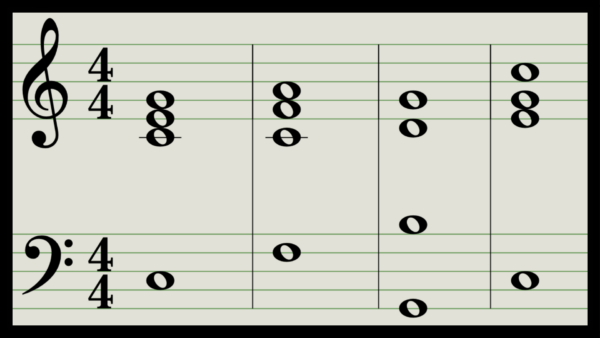 When you make music and songs, you are creating a storyline of chords, harmonies and melodies.
When you make music and songs, you are creating a storyline of chords, harmonies and melodies.
In fact, the chord progression of your music is what I like to call “the harmonic storyline” of music.
And just like when writing a story of words, you need to break it up in sentences, paragraphs and chapters.
What is a Cadence in Music?
A cadence in music is like “punctuation”, or ending of a paragraph of text. A cadence is something that feels like an end. It does not have to be the final end of your song. It simply needs to feel like a resolution of a phrase in your composition.
Types of Cadences in Music
There are different kinds of cadences you can use within your music and chord progressions, and each one has a different purpose.
1 – Perfect Authentic Cadence (PAC)
The perfect authentic cadence (PAC for short) is the strongest and most resolute form of cadence. It feels like a proper ending, and is mainly used for the final cadence in music. It is when you go from the dominant chord (V) to the tonic chord (I). And also in order to get the most powerful feeling of resolution, a perfect authentic cadence has both the V and I chord in root position, and finish with the tonic as the highest note. Sometimes you even add the 7th on the V chord which will create an even stronger pull towards the tonic.
2 – Imperfect Authentic Cadence (IAC)
The imperfect authentic cadence (IAC for short) is similar, but a bit weaker than a perfect cadence. They are authentic because they lead to the tonic chord, but they are imperfect because they don’t have the true root position V – I with the tonic high note ending. There are also 3 types of imperfect authentic cadences.
- Root Position IAC: Same as PAC but not finishing with the tonic as the highest voicing in the chord.
- Inverted IAC: Similar to PAC, but one or both cadence chords are inverted.
- Leading Tone IAC: Instead of the V chord, you use a leading chord (vii) into the I.
3 – Plagal Cadence
This is when you end with IV (sub-dominant) into the I (tonic). It is sometimes referred to as the “Amen” cadence, as it is often used as the harmony for “Amen” in church hymns. There is also a variation of plagal cadence called “minor plagal cadence”, which is when you go from a minor sub-dominant chord to the major tonic (vi – I).
4 – Deceptive Cadence
Like the word “deceptive” suggests, this is when the listener expects a cadence after a strong V chord, but you don’t use the tonic to create the resolution. Instead you go to another chord degree, which often will be the submediant chord (VI or vi). By making the V a 7th chord you will enhance the deception since it has such as strong pull to resolve with the tonic chord. For example: V7 to vi in a major key.
Special Variation Cadences
There are other variations of cadences you can use as “punctuations” or “paragraph endings” in your chord progressions. For example, even with authentic cadences (V – I) you can use substitute chords for the V chord, for example: ♭VII-I, or ♭III-I.
Using chord substitutions from other modes is a great way of adding harmonic variation to your chord progressions and a “twist” to your cadences.

